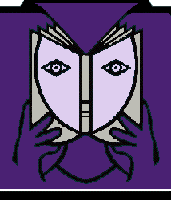
 |
National Library News |
by Marjorie Malcolm and
David Murrell-Wright,
Acquisitions and Bibliographic Services
The National Library’s collection of Canadiana is a reflection of the multilingual nature of the country. Publications in Canada’s two official languages, English and French, may predominate, but publications in all the languages that make up the multilingual mosaic of our Canadian society can be found in the collection. A search of the National Library catalogues indicates that material can be found in over 100 languages.
The Library receives current publications on legal deposit in dozens of languages from individuals, cultural societies, associations, school boards, and all levels of government across Canada. Older foreign-language materials are actively sought and acquired as purchases or gifts. The National Library complements its collection of Canadian imprints by acquiring materials published abroad by Canadian authors, works about Canada, or translations of works by Canadian authors. Foreign publications may be bought through agents in various countries, received through the Canada Council for the Arts or the International Council for Canadian Studies network, or accepted through an exchange or as a gift.
Probably the most widely translated Canadian author in the National Library collection is Lucy Maud Montgomery, with over 200 translated editions in over a dozen languages. One can also find copies of James Houston’s book Akavak: An Eskimo Journey in Afrikaans, nearly the complete works of Mazo de la Roche in Finnish, and the works of Michel Tremblay in Danish and German.
Cataloguing Practices
Unilingual English or French publications at the National Library are catalogued in the language of the publication, with subject headings provided in both languages. Generally, the language of the catalogue entry for foreign-language material is English, with any subject headings provided in both English and French. The catalogue procedures for foreign-language materials are the same as for English or French publications, unless the alphabet or script is non-roman, in which case an extra step is required. In order to incorporate the bibliographic information into the National Library’s catalogues and share the information with other libraries, cataloguers need to "transliterate" the non-roman script of names and titles into roman script. For entries in English, the National Library follows the 1997 edition of the ALA-LC Romanization Tables, published by the Library of Congress. This publication, commonly used in English libraries, includes transliteration schemes for 54 non-roman scripts including Cyrillic, Indian and Oriental languages, Greek, Hebrew, and many others. For entries in French, the National Library uses the transliteration tables published by the International Organization for Standardization (ISO).
Providing User Access to the Foreign-Language Material
Other than English and French, the languages received by the Library in the largest numbers are German, Ukrainian, Spanish, Italian and Japanese, with significant numbers of titles being collected in a variety of languages of the First Nations. Bibliographic access to this material can be obtained on-site through the National Library’s suite of on-line catalogues including AMICUS and Dynix. For off-site users, the fee-based Access AMICUS or the freely available resAnet can be found on the Web. Canadiana: The National Bibliography is now in a CD-ROM format that provides the searcher a unique feature: the ability to search by language as a primary search. With this capability, the searcher is able to retrieve and view all Canadiana items in a particular language.
The National Library’s mandate is furthered by ensuring that the Canadian published heritage, in all languages, is preserved and made accessible through the Library's databases and collections.